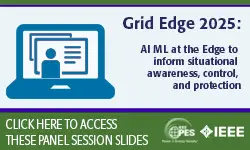-
Members: FreeCIS
IEEE Members: Free
Non-members: FreeLength: 01:00:12
22 Jul 2020
This talk summarizes neural architectures for normal and abnormal learning and memory in
which widespread interactions across a brain regulate higher-order biological intelligence. The
architectures can be used to design autonomous adaptive agents.
The talk will first explain how the prefrontal cortex�including orbitofrontal, ventrolateral
prefrontal, and dorsolateral prefrontal cortices�interacts with multiple brain regions that form a
unified architecture with which to regulate cognitive and cognitive-emotional dynamics. Model
explanations include how the value of visual objects and events is computed, which objects and
events cause desired consequences and which may be ignored as predictively irrelevant, how to
plan and act to realize these consequences, and how to selectively filter and store attended vs.
unattended events, leading to movements towards, and conscious perception of, attended events.
Modeled processes include reinforcement learning and incentive motivational learning; object
and spatial working memory dynamics; and category learning, including the learning of object
categories, value categories, object-value categories, and sequence categories, or list chunks.
This predictive Adaptive Resonance Theory, or pART, architecture explains neurophysiological
data about desirability, availability, credit assignment, category learning, and feature-based
attention, among others.
The talk will then explain in greater detail how ART unifies the explanation of diverse data
about normal and abnormal category learning, recognition, and memory. In ART, vigilance
control determines whether learned categories will be general and abstract, or specific and
concrete. Vigilance automatically tracks environmental statistics to determine an optimal level of
category generalization in changing environments. ART models how both phasic and tonic
vigilance levels are regulated by acetylcholine (ACh) release by the nucleus basalis of Meynert.
Breakdowns of phasic and/or tonic vigilance control clarify symptoms of Alzheimer�s disease,
autism, and medial temporal amnesia. ACh-modulated laminar cortical ART circuits that carry
out important perceptual and cognitive processes in awake individuals also explain properties of
Up and Down states during slow wave sleep.
which widespread interactions across a brain regulate higher-order biological intelligence. The
architectures can be used to design autonomous adaptive agents.
The talk will first explain how the prefrontal cortex�including orbitofrontal, ventrolateral
prefrontal, and dorsolateral prefrontal cortices�interacts with multiple brain regions that form a
unified architecture with which to regulate cognitive and cognitive-emotional dynamics. Model
explanations include how the value of visual objects and events is computed, which objects and
events cause desired consequences and which may be ignored as predictively irrelevant, how to
plan and act to realize these consequences, and how to selectively filter and store attended vs.
unattended events, leading to movements towards, and conscious perception of, attended events.
Modeled processes include reinforcement learning and incentive motivational learning; object
and spatial working memory dynamics; and category learning, including the learning of object
categories, value categories, object-value categories, and sequence categories, or list chunks.
This predictive Adaptive Resonance Theory, or pART, architecture explains neurophysiological
data about desirability, availability, credit assignment, category learning, and feature-based
attention, among others.
The talk will then explain in greater detail how ART unifies the explanation of diverse data
about normal and abnormal category learning, recognition, and memory. In ART, vigilance
control determines whether learned categories will be general and abstract, or specific and
concrete. Vigilance automatically tracks environmental statistics to determine an optimal level of
category generalization in changing environments. ART models how both phasic and tonic
vigilance levels are regulated by acetylcholine (ACh) release by the nucleus basalis of Meynert.
Breakdowns of phasic and/or tonic vigilance control clarify symptoms of Alzheimer�s disease,
autism, and medial temporal amnesia. ACh-modulated laminar cortical ART circuits that carry
out important perceptual and cognitive processes in awake individuals also explain properties of
Up and Down states during slow wave sleep.


